1971 Ford F250 Reviews
You'll find all our 1971 Ford F250 reviews right here. 1971 Ford F250 prices range from for the F250 to for the F250 .
Our reviews offer detailed analysis of the 's features, design, practicality, fuel consumption, engine and transmission, safety, ownership and what it's like to drive.
The most recent reviews sit up the top of the page, but if you're looking for an older model year or shopping for a used car, scroll down to find Ford dating back as far as 1970.
Or, if you just want to read the latest news about the Ford F250, you'll find it all here.
Ford Reviews and News
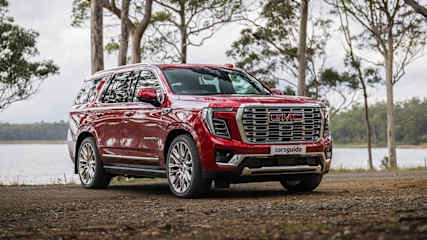
Here's why monster US imports including 2025 GMC Yukon Denali, Ram 1500 and Chevrolet Silverado really aren't built for Australian conditions | Opinion
Read the article
By Marcus Craft · 08 Jun 2025
The GMC Yukon Denali is the latest arrival in a continuing US vehicular invasion of Australia. Imported here as left-hand drive and then converted to a right-hander, the Denali is a big 4WD wagon with eight seats, a petrol V8 engine and a standard features list as long as LeBron James’s arm.Brought to our shores by General Motors Specialty Vehicles (GMSV), the Denali is a premium-style vehicle; massive, comfortable and, as an eight-seat 4WD wagon, it has few rivals in the Aussie market. But it lacks a competitive warranty, its price-tag puts it way out of reach of a lot of 4WD buyers, and for a few distinct reasons it is a sterling example why US wagons and utes don’t belong in Australia.It’s too big.It’s big. Even the signature Denali grille – with LED headlights and chrome accents – is the size of a tiny house. The 2025 Denali is 5337mm long (with a 3071mm wheelbase), 2378mm wide, 1943mm high, and it has a kerb weight of 2813kg.The interior is great because it is big, roomy and occupant friendly, but the Denali’s gargantuan exterior dimensions simply mean it’s a beast of burden in busy city or suburban streets, and even on bush tracks, which can be quite narrow.The Denali demands to be driven with supreme consideration – and even more patience, more skill, and more experience than smaller four-wheel drives require – in order to avoid city- or bush-related damage, incidental or otherwise.Also, worth remembering is that fact that no matter how good a driver you are, there’s always a shopping trolley, key-wielding person who hates big vehicles, or someone who only parks their car by ‘touching’ the vehicle nearest to them out there, waiting to ding/scratch/dent your US behemoth. You’ve been warned.It’s not built for Australian conditions.The Denali is imported to Australia as a left-hand drive vehicle and then Walkinshaw's subsidiary company Premoso remanufactures the US 4WD wagons to right-hand drive at their facility in Clayton, Victoria. But the problems aren’t with Premoso’s work – they’ve done an impressive job – the flaws are in the vehicle’s original design and build.For one, as mentioned, it’s big. If you aren't used to steering a tank-sized 4WD around town then driving the Denali is going to be a very steep – and possibly very expensive – learning curve.Two, it’s built for open-road cruising on US freeways; it’s not engineered to cope with our punishing dirt-road corrugations of Australia, or our extreme heat, or our poorly maintained backroads and bush tracks.Thirdly, the Denali lacks the prestige fit and finish and build quality usually showcased in something at this price-point. Instead, there is hard plastic throughout, storage receptacles with flimsy lids, and lacklustre fit and finish.Also, this Denali is on 24-inch rims and paper-thin Bridgestone all-season tyres (285/40R24), which is not a wheel-and-tyre package suited to anything other than driving on the blacktop. These tyres don’t offer the grip of a decent all-terrain tyre and you can’t drop air pressures because there isn’t enough tyre there.The Denali has a naturally-aspirated 6.2-litre V8 petrol engine – producing 313kW and 624Nm – and that’s matched to a 10-speed automatic transmission.This is a great vehicle to drive on-road for general day-to-day driving duties – settled and composed – and it’s close to flawless on the open road, smooth and refined, but that big V8 – as great as it sounds – has the potential to drink … a lot.The Denali’s air suspension – which aims to level out even major imperfections in the road or track surface – and its special dampers aren’t as effective or as seamless a system as the Patrol/Patrol Warrior’s Hydraulic Body Motion Control, which acts as a sway bar and sway bar disconnect equivalent and is very impressive. Official fuel consumption is listed as 12.8L/100km (on a combined cycle), but on my most recent test of it, I recorded 16.2L/100km. Not too bad, all things considered, but you have to remember that I didn’t have much weight onboard and I wasn’t towing anything.The Denali has a 91L fuel tank so, going by my on-test fuel-consumption figure, you could reasonably expect a driving range of about 560km from a full tank. Once loaded up with real-world burdens (e.g kids, dogs, camping gear etc) then you’ll soon see the Denali’s fuel use climb.It’s expensive.The Denali has a price tag of $174,990 (excluding on-road costs), making it a lot more expensive than most vehicles that could be considered rivals in the Aussie market.Until now, if you’d been looking for an eight-seat 4WD wagon with a petrol V8 engine, you'd be limited to considering something like a Nissan Patrol or a Land Rover Defender 130, but at least the Patrol is almost half the price of a Denali.Another thing, as mentioned earlier, the Denali does not have the high quality of fit and finish and build quality usually associated with vehicles that cost this much – that’s disappointing.And maximum braked towing capacity in the Denali is listed as 3628kg (when it has a 70mm ball and weight-distribution hitch) – which isn’t that much more than other large 4WD wagons or utes in Australia offer (3500kg maximum braked towing capacity).US utes and wagons are big, bloated, overpriced and underdone – and they should go back from whence they came.Cue the hate mail...

Australia's favourite cars revealed: 2025 Toyota HiLux beats the Ford Ranger, Toyota RAV4 Hybrid and Tesla Model Y 'Juniper' to the top of the sales charts in May
Read the article
By Dom Tripolone · 04 Jun 2025
Australian new-car sales were resilient in May despite economic headwinds.
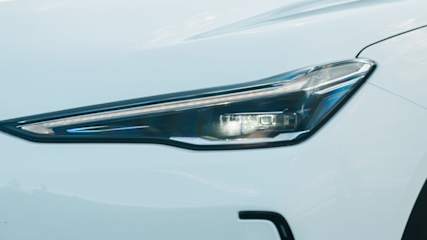
Save thousands with these new car deals: All the end of financial year deals from car brands in Australia
Read the article
By Jack Quick · 01 Jun 2025
It’s EOFY time again!

The coolest cars Ford, Chevrolet, Cadillac and others are keeping from Australia | Opinion
Read the article
By Stephen Ottley · 31 May 2025
Australia and America used to be close allies on the automotive front, but it seems time is increasing the distance between the two countries.
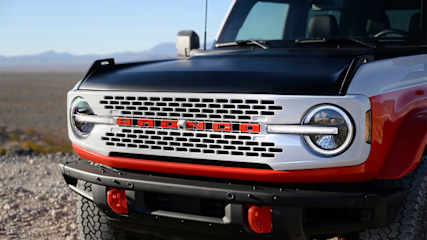
Australians are sick of waiting! Why the time is right for this tough 4WD to join the Ranger, Everest and Mustang in Australia | Opinion
Read the article
By Stephen Ottley · 25 May 2025
In September 2022, Ford CEO told me directly that the Bronco would be coming to Australia. We, as a nation, have waited patiently, but the time is right for the brand’s most adventurous SUV to join the local line-up, complimenting the Ranger and Everest it’s so closely related to.And this isn’t just the pipe dream of one motoring journalist, there are several key events that appear to be lining up in favour of the Bronco making its way to Australia within the next few years. But first, a quick history lesson. I was fortunate enough to catch Farley directly at the reveal of the new-generation Mustang in Detroit and ask him directly about the chances of the Bronco and its Bronco Sport small SUV namesake making Australian showrooms. This is what he said.“We can do Bronco and Bronco Sport for the globe for sure,” Farley told me. “But we have, like, a year or two order bank so we have a lot of work to do on our capacity before we can even consider something like that.”He added: “Of course it can be engineered , just like Mustang, but you have to invest in the capacity and it’s like the first or second inning of building up the Bronco line-up. It’s a whole family, we’ve just come out with the Heritage, we’ve got Everglades, there’s going to be a lot of iterations so just give us some time.”That was nearly three years ago and in that time much of what he said has come to pass, unsurprisingly. Ford has continued to roll out special editions of the Bronco in the US market, the latest being the Stroppe and Free Wheeling versions. This has helped keep interest high in the US and therefore, as Farley referenced, it has meant international expansion is a lower priority.As we’ve previously reported, Ford opened a second Bronco production line in China last year, a joint-venture with Jangling Motors, which leaves the Michigan, USA plant free to focus on feeding the hungry American market. While Ford Australia has made no official comment on the Chinese factory being able to supply Bronco here, it does clear some notable hurdles. The biggest one is the cost of both production and shipping, with China being significantly cheaper than America in both aspects.There’s also the on-going trade war between China and the USA, which effectively rules out any chance the Chinese factory could supply Broncos back to America. This, theoretically, leaves the door open for Australia and its SUV-loving market to take pole position for a future Chinese-built, right-hand drive Bronco.Given the Bronco has been on sale in the US for more than five years, having been revealed in 2020, it is approaching a likely mid-life update. This would be the ideal opportunity for Ford to make good on Farley’s promise and introduce the Bronco to Australia.Given the success of the Ranger and Everest, which share the same underpinnings as the Bronco, it would likely be a welcome addition to Australian customers. Ford officials have previously indicated that the modest sales of the Jeep Wrangler (the closest direct rival to the Bronco) have been a cause of concern, but given the relative success of Ford’s Ranger ute to Jeep’s Gladiator, that is a spurious comparison.Should the Chinese plan get the green light, it’s likely the Bronco could be in Australian showrooms by 2027, given the time needed to finish development of the right-hand drive version and Ford Australia’s focus on launching the Ranger Super Duty in 2026.And while there’s no official comment from Ford to back any of this up, Farley’s commitment as the big boss says all signs point to the Bronco hitting Australian roads and trials eventually.
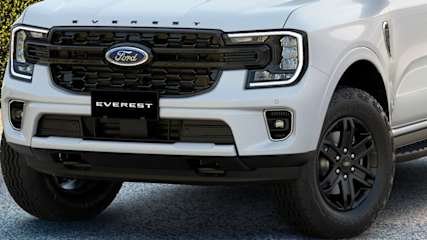
Special Toyota Prado challenger arrives: 2025 Ford Everest Black Edition confirmed for Australia to fight off Isuzu MU-X, GWM Tank 300
Read the article
By Samuel Irvine · 23 May 2025
Ford has introduced a special edition variant of its popular Everest SUV dubbed the ‘Black Edition’, which delivers a suite of cosmetic tweaks.
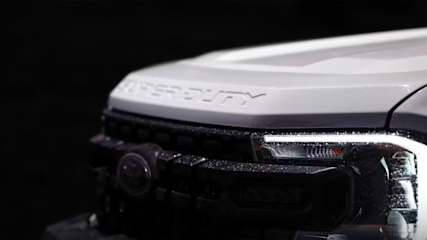
2026 Ford Ranger will break new ground and move beyond established rivals the Toyota HiLux, BYD Shark 6, Nissan Navara and Mitsubishi Triton
Read the article
By Byron Mathioudakis · 17 May 2025
Are you an owner/driver of an Isuzu N Series, Fuso Canter or Hino 300 small truck? Then this might be for you, because Ford is banking on breaking into the light duty (LD) truck class with something completely different to the cab-over chassis norm with the coming Ranger Super Duty.
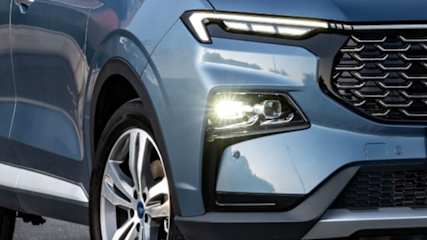
Ford Territory lives on! And so does the Escape and Puma. Bring them back to Australia along with the Explorer to help Ranger and Everest in the fight against the 2025 Toyota LandCruiser, Nissan Patrol, Kia Sorento and Toyota RAV4 | Opinion
Read the article
By Laura Berry · 17 May 2025
Ford Australia has axed so many of its cars over the past two years that it almost has nothing left on sale. It’s just lucky that one of the few cars left that it does sell — the Ranger ute — does so in enormous numbers. So what’s missing from Ford’s line-up? A lot. Here are the cars we think Ford really needs in Australia right now.Ford lacks a rival, to not just to hardcore four-wheel drives like the Toyota LandCruiser and Nissan Patrol, but to more domesticated Aussie family favourites such as the Toyota Kluger, Kia Sorento and Hyundai Santa Fe.Yes, the Ford Everest seats seven and can go off-road with the best of them, but a more plush and comfortable suburban cruiser would fit nicely in the line-up.Now this might hurt a little bit and I apologise in advance, but in South Africa you can buy a Ford Territory. I know, what the Ford!?So, the South African Ford Territory is made in China and sold in other countries but it’s made in right-hand drive, which means there’s no reason why we can’t have it here.This new Territory isn’t as big as the Santa Fe at 4.63m long so it’s not really a large SUV but still, what a shame.What Australia really needs is a Ford Explorer, as in the petrol-powered version form the United States, not the UK electric version. The US Explorer is a a five-metre long seven seater, while the UK version is 4.4m and smaller than an Escape.Nope, bigger is better in this case and while the Explorer is currently only made in left hand drive, there is a chance a right hand drive might get the green light for the next-gen model.Ford axing the Escape is the car company equivalent to throwing away your only pair of pants just because you don’t like the colour of them.OK, that’s a terrible analogy but the point is mid-sized SUVs are the bread and butter of car brands and they sell all year long in large numbers and they’re kind of an essential item to car manufacturers. Ford axed the Escape because it didn’t sell enough of them. But it could easily bring back the Escape because it’s sold in the right-hand drive in the UK.Ford should seriously consider it, the mid-sized SUV segment is increasing in size at 19.6 per cent market share and Ford’s not able to join in the spoils. Toyota has the RAV4, Kia has the Sportage, Nissan has the X-Trail and Ford has nothing. No pants to wear at all.If there’s something Australians love almost as much as mid-sized SUVs it’s a small SUV. We’re talking the likes of the Toyota Corolla Cross, Hyundai Kona and the MG ZS. And Ford did have the Puma, but axed it in 2024 just four years after it arrived.The Puma was a high-quality feeling and premium looking SUV, but it was overpriced compared to its rivals and so sales struggled. People want premium looking at budget prices apparently.The Puma is sold in the UK as a hybrid and a fully-electric vehicle, so bringing it to Australia wouldn’t require anything other than a trip on a boat from Romania where they’re made.So there you are, Ford has pretty much all the cars it needs in right-hand drive to take the fight to rivals such as the Toyota RAV4 and Corolla Cross, the Kia Sorento and Hyundai Santa Fe.Will we see the Territory again? Will Aussies be OK with a Chinese made Territory? Given the the shift in attitudes and growing maturity towards Chinese brands and their rapid take-up there's no reason they wouldn't be.Sure bringing back the Territory nameplate, plus the Puma and Escape could be a risk for Ford, but would it be as big a risk as having all your eggs in the Ranger basket as it does now?
.jpg)
Ford Everest 2025 review: Tremor - off-road test
Read the article
By Marcus Craft · 11 May 2025
The Ford Everest Tremor is the latest mildly upgraded 4WD to enter the market. While the Ranger Tremor is a limited-edition variant, the Everest Tremor is here to stay.It has a 3.0-litre turbo-diesel V6, longer coil springs, Bilstein dampers and General Grabber AT3 all-terrain tyres.It also gets 'Rock Crawl' mode, steel bash plates, side steps and Tremor-specific styling and branding.
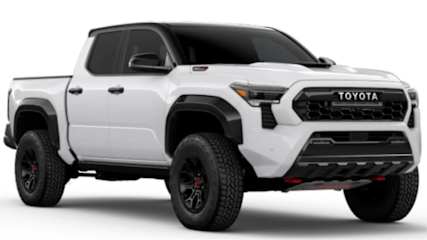
The new Toyota HiLux we should get! Here are four reasons why the Toyota Tacoma-based Toyota HiLux won't be bothering the Ford Ranger, BYD Shark 6 and other utes in Australia ... and one reason why it still might!
Read the article
By Byron Mathioudakis · 11 May 2025
Where on earth is the Toyota Tacoma for Australia?Designed and developed expressly for the North American market, the series has served for over 30 years as the slightly larger and more comfortable cousin to the venerable Toyota HiLux.In fact, the two medium-sized utes were closely related until very recently, even as the Tacoma grew larger and more sophisticated over three generations, where it became the best-selling vehicle in its pick-up segment in the United States – a position held since 2004.Unveiled in 2023, the latest version prompted a high level of anticipation from industry analysts, since it was also expected to become the replacement for the eighth-gen HiLux, which celebrates its 10 anniversary this month.After all, the Tacoma’s timing was spot-on, with the newly-redesigned Ford Ranger ending the Toyota ute’s seven-year reign at the top of the Australian sales charts that same year (and hit number one again in 2024).It doesn’t take too much to figure out why people remain excited about the prospect of a HiLux-badged Tacoma for our market.Key attributes include a formidable presence brought about by its chunky styling, a vast array of grades including a Raptor-aping TRD Pro, huge interior space, sizeable load area, massive step up in safety technology and the availability of a hybrid powertrain option.The Tacoma trails Australia’s 3500kg braked towing capacity maximum yardstick by around 500kg, based on corresponding Canadian figures.That would probably change for our market, especially when you consider that today’s Tacoma is based on the same Toyota New Global Architecture – Frame (TNGA-F) body-on-frame “truck” platform that also underpins the J300 LandCruiser and J250 Prado 4WD SUVs.It is that connection that prompted much speculation over when – rather than if – the Tacoma would arrive in Australia, albeit wearing HiLux badges and possibly having Thai sourcing. After all, if they’re that closely related, wouldn’t they have interchangeable parts with models already offered in this market?As it turns out, Toyota will instead offer three distinctly different medium-sized utes – and it seems Australia will again miss out on the Tacoma after all… or at least, for now.Though unconfirmed officially, we hear from an internal source that a facelifted version of the existing, decade-old Mk8 HiLux will spearhead Toyota’s fight against the Ranger, BYD Shark 6 and co. from next year in Australia.About the only part of the Tacoma – which will remain North American only for the time being – we may see is a variation of its 2.4-litre i-Force turbo-petrol/electric hybrid powertrain, as it has been rumoured to be added to the HiLux facelift, as Toyota Australia starts its move away from diesel.Finally, as outlined previously, Europe, Japan and other lower-carbon regions are set to score the production version of the EPU (Electric Pick-Up) Concept Ute electric vehicle from the 2023 Tokyo Mobility show, though that’s also mooted for Australia too, as a flagship HiLux EV.So, what’s holding the Tacoma back for us?Mainly, it is only produced in Mexico, with annual capacity of around 250,000. And that’s about how many are soaked up in North America alone.Secondly – and this is a major reason – the Tacoma is only currently manufactured in left-hand drive (LHD) guise. And changing that makes no business sense.Typically, engineering for right-hand drive (RHD) in any vehicle program can add hundreds of millions of dollars to costs, and that appears not to have happened in this case. And it's not likely to in the future.Why? Even if Toyota could sell over 50,000 utes annually to match HiLux’s efforts last year in Australia – and that would possibly make us the fictional RHD Tacoma's largest market globally – that’s not nearly enough production volume to recoup development costs.That was reportedly one of the driving forces behind General Motors killing Holden barely two years after local manufacturing ceased in 2017, as there just wasn’t enough volume to justify the expense of changing LHD vehicles over to RHD for Australia. Even for a colossus like Toyota.Additionally, while the UK is another big RHD ute market for the brand, shifting around 30,000 HiLuxes last year, that's still not enough volume, while the vast majority of South African and Thai ute sales - the two remaining big RHD countries – are for more-affordable and lower-spec models. And cheap is not what any TNGA-F vehicle is designed to be.That’s probably the reason why the Tacoma is not earmarked to be built in Thailand, for now anyway. The existing HiLux fills that role far better.Thirdly, should it be green lit for RHD, the Tacoma would also be too expensive even in Australia, anyway, given its Mexican sourcing.This means the cheapest grade would probably cost a lot more than the current most expensive HiLux out of Thailand does. Which, by the way, is also where the Ranger, Isuzu D-Max, Mazda BT-50, Nissan Navara and Mitsubishi Triton also hail from, while the Shark 6, GWM Cannon, LDV Terron 9 and others from China cost even less for what they offer.Tacoma would have no hope matching their prices. The upshot here is that achieving something close to the current HiLux's 50,000 sales annually in Australia would be wildly optimistic as a result.Lastly, with Tacoma sales in the first quarter of 2025 up nearly 180 per cent year-on-year in the USA, there is no incentive for Toyota to compromise production capacity to accommodate the relatively small volume required for Australia.Of course, this could change with the US federal government’s tariffs on non-US made products, that might lead to big price increases for the Tacoma in its main market.While still highly unlikely, that might open the door for RHD exports should US Tacoma sales consequently collapse, though these are still early days.That’s a long shot, and it’s fair to assume that the only way Australians might be able to buy a reasonably-priced Tacoma is if Toyota decides to add production to Thailand, or some other lower-cost base than Mexico. Or follow the larger Tundra ute’s example by having it remanufactured from LHD to RHD in Melbourne.So, no Tacoma-based HiLux, then.Which is a shame, as a ute version of the latest Prado – which what the latest, N400 model essentially is, complete with an i-Force petrol-electric hybrid powertrain – would sound like the HiLux that Toyota should be offering to its fanatically loyal Australian customer base.Do you agree?




